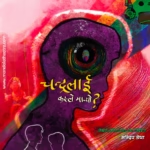Evan Hastings, a drama therapist and educator based in Bengaluru, India, is the founder-director of Shadow Liberation, a participatory theatre group. “Content Advisory”, a forum theatre play devised and performed by the students of Azim Premji University and directed by Hastings, was performed at the NITFest 2022. In this talk with Deepali Shrestha, Hastings speaks about his theatre journey and the story behind the play.
Is this your first time performing in Nepal?
This is my second time here. I did a Shadow Liberation play called “Bird Song” in collaboration with Mandala Theatre in 2015, right before the earthquake. It was performed at the old venue of Mandala Theatre. It centred around sexual and gender discrimination in Nepali Society. We also had a lovely discussion after the performance.
How long have you been doing Forum Theatre plays?
I have been doing them since 1999.
What inspired you to use the name Shadow Liberation?
Our first project was about mixing shadows for Forum Theatre, called Gender Shadows. As the name suggests, it was about gender issues. So, rather than making the play about the problem, it centred around the goal: Liberating shadows. It was supposed to depict the world we want to create rather than the world we are in that is full of suffering. We had four shows in Bangalore: One was an invite-only preview show, and the other three were public shows.
How many plays are there under Shadow Liberation?
I have lost count, but there may be about 25 to 30 plays under Shadow Liberation. The play we performed at Mandala Theater is called “Content Advisory”, which is one of the several plays under Shadow Liberation. The catalogue didn’t mention it because we hadn’t written the play before submitting it to the Nepali International Theatre Festival. We wrote the play and performed it for the first time in Bangalore a week before the performance here.
How did you begin doing Shadow Liberation projects?
It was initially a project with a friend of mine from India. She offered to do a project together. At the time, I was using an old overhead projector and doing shadow puppetry to train teachers about social justice curricula in the classroom. This was something related to professional development, which was extremely fun. We decided to do a similar project by mixing it with Forum Theatre, involving college students in India. So, we developed a project called “Gender Shadow” in 2010. It was the first of its kind and perhaps not very refined, but people liked it. After receiving a good response, I tried again by creating another play with the same structure and format. I did it continuously, and it grew. As you know, Shadow Liberation was originally a project; now, it’s a method.
What is the importance of shadows in the play?
We use shadows to hold pain and trauma, as the stories of people suffering domestic violence and sexual abuse are sadly common around us. This is also a statistical fact. So, we had to think about becoming responsible by ensuring our performers wouldn’t feel emotionally overwhelmed every time they performed. Similarly, it was essential for the audience not to be dominated by the distressing emotions while they empathised with the performers. The shadow provides a space to make us feel safe while approaching such issues. Essentially, the shadow provides transitions not just to the different scenes of the play but also into an inner world where pain and suffering find a place.
What was the vision behind “Content Advisory”?
The vision was to create a safe space for dialogue about issues that are otherwise taboo or difficult. There were a lot of issues in the campus community while we were making the show. We didn’t plan to make this one about the university, but it happened to be. Those issues were real, and it was what the people were coming to the class with. It was an elective class about a shadow liberation play that looked at gender violence issues, and then we decided to make it about the university.
How did you begin using theatre to depict gender violence?
As a university student, I joined other students in performing such plays. We all came together because we were survivors of sexual violence and made a play about it.
What is your motive behind doing such plays?
One of the big themes of the play is how we can be humble and show humanity even when complications are involved. I might have the analysis like, “Oh, we should end patriarchy or something like that.” But the crucial question is: How can we make a show about problems to which we don’t have answers? We wanted to question our audience with honesty, not expecting any correct answers or answers that were already in the back of our minds. We just wanted them to be humble and honest towards themselves. But there were also risks involved with such an approach. I was worried about how the people in the university would take it or if they would see it as some form of protest.
How did the people in the university respond to the play?
I think they took it well. Not everybody comes to shows like this, and only a select few people came, and they really liked it. They also got involved on stage and took the role of administrators, showing what they, as a college, can do differently. Even though the play was on the edge of what is acceptable, we were open and didn’t accuse anybody. We tried to make the play balanced in that way. There is an imbalance in power, but we tried our best to be fair to every character.
Do you just bring stories from universities?
No, it doesn’t always have to be about universities. I have done Shadow Liberation plays about workplaces and even general scenarios.
What is your opinion of the theatre scene in Nepal?
I love it. So many young people are involved in it, and it is special. The audience, performers, directors and actors are all so young, which makes me giddy with joy. As an outsider, I perceive that young people here are really determined to do something for Nepali Theatre.
Do you think Nepali theatre has something different to offer to the theatre world?
Yes! There was something that struck me last time. Somebody said that Nepal is a land of a thousand melodies, and as you cross the hills and reach another hill or plain, you find a different melody. It is the cultural diversity of Nepal which makes it so rich. I love how people bring modern themes and professionalism to theatre while keeping traditions and culture in mind. I think only the Nepalis can do that with such precision.







